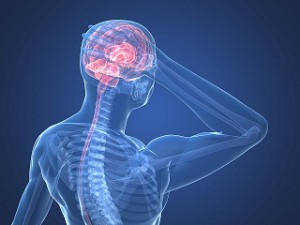In September last year, the National Football League (NFL) pledged to provide $30 million in funding for medical research, the single-largest donation to any organization in the league’s 92-year history.
One of the main research areas for the funding, overseen by The National Institutes of Health (NIH), is chronic traumatic encephalopathy (CTE) and the link with neurodegeneration, especially Alzheimer’s disease.
CTE is a progressive degenerative disease of the brain found in people with a history of repetitive brain trauma. This condition has emerged as a significant public health problem, particularly among those in the military or athletes involved in contact sports such as boxing, American football and soccer.
 Alzheimer’s Research & Therapy is inviting research submissions to its Traumatic Brain Injury special series, guest edited by Robert Stern (Boston University). The publication of these articles will be co-ordinated with a series of commissioned reviews and opinions from leaders in the field, addressing a range of topics pertinent to CTE. Upcoming contributors include Lee Goldstein (Boston University), Alexander Lin (Brigham and Women’s Hospital), Martha Shenton (Harvard University) and Thor Stein (Boston University).
Alzheimer’s Research & Therapy is inviting research submissions to its Traumatic Brain Injury special series, guest edited by Robert Stern (Boston University). The publication of these articles will be co-ordinated with a series of commissioned reviews and opinions from leaders in the field, addressing a range of topics pertinent to CTE. Upcoming contributors include Lee Goldstein (Boston University), Alexander Lin (Brigham and Women’s Hospital), Martha Shenton (Harvard University) and Thor Stein (Boston University).
One blow too many?
Opening the series, Charles Bernick (Cleveland Clinic) and colleagues review cross-sectional results from the first year of the recently launched Professional Fighters Brain Health Study to identify what boxing can tell us about repetitive head trauma and the brain. Bernick concludes that greater exposure to head trauma is associated with increased risk of long-term neurological disease in boxers. This data helps to identify the clinical features of CTE, aiding further knowledge and treatment.
Neurodegeneration link to football
Everett Lehman (CDC) reviews recent research linking head injuries in professional American Football players with neurodegeneration. Concluding that there is considerable evidence that multiple and recurring concussive and subconcussive blows to the head can be damaging to the brain, Lehman proposes a number of unanswered questions for future research on how and why neurodegeneration may occur in football players.
Although boxing and other combat sports may serve as a human model to study the effects of repetitive head trauma on brain structure and function, there is still much work to be done in CTE. This includes understanding its natural history, determining its risk factors, developing diagnostic methods including predictive biomarkers and ultimately discovering therapeutic targets.
If you would like to enquire about the suitability of a study for consideration, please email editorial@alzres.com. Otherwise, please submit online and indicate in your covering letter that you would like the article to be considered for the traumatic brain injury series.
Alzheimer’s Research & Therapy is an international, peer-reviewed journal with an Impact Factor of 4.39. For further information about the journal, please visit the website, or contact us for enquires about the special series. To access all subscription content, including peer-reviewed reviews, commentaries and viewpoints, register for a free online trial to the journal and sign up for article alerts.
![]()
Comments